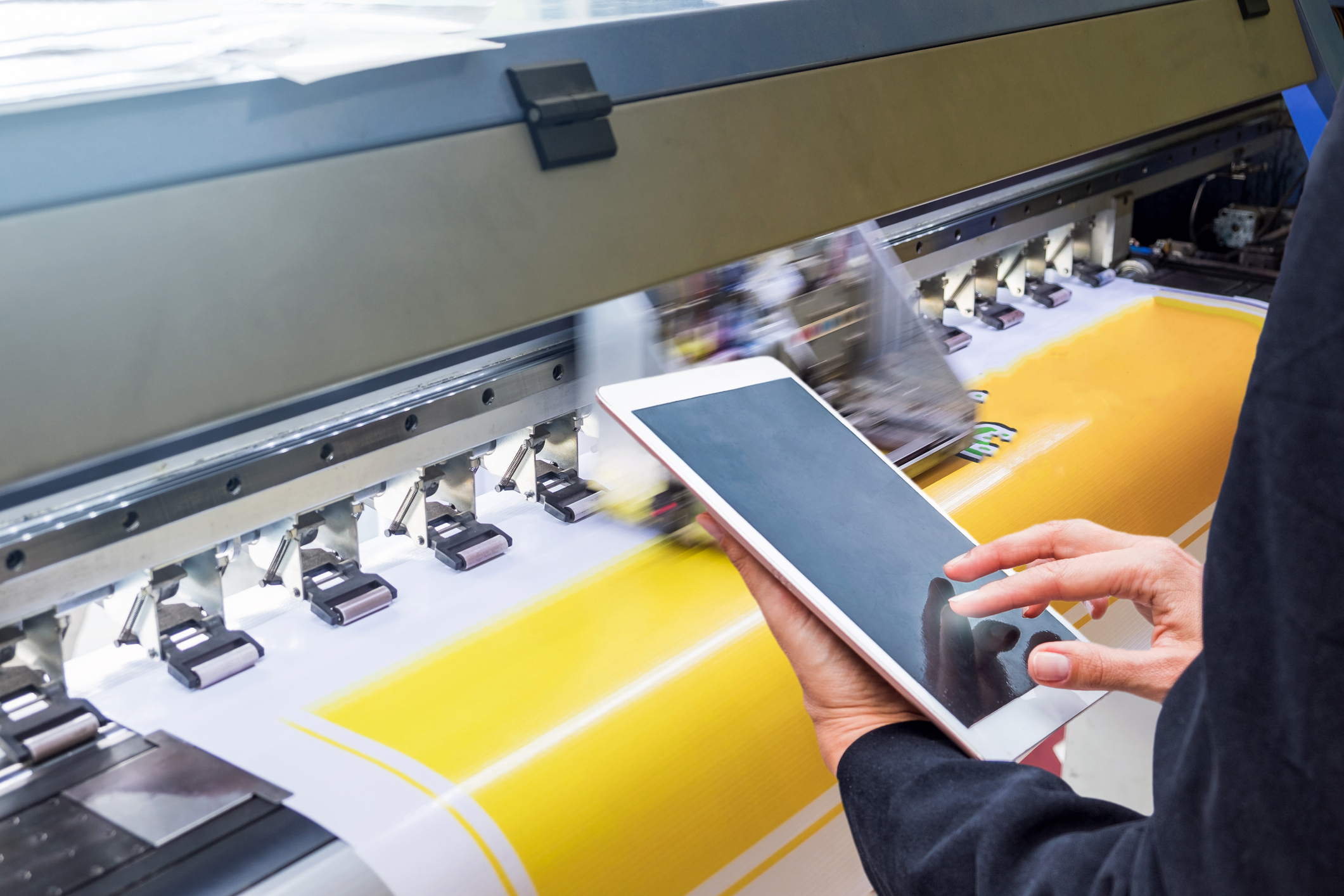*This article is the final installment of a six-part series on Six Tasks to Boost In-Plant Profitability. You can read an overview of the series here.
Chargeback Management Fundamentals
The idea of having a central record of truth is a happy possibility for today’s In-Plant printers, who are often contending with adjustments to a service level agreement (SLA) plus billing/budgeting challenges from the appropriate department.
Today’s automation software provides printers with a central record of truth that keeps track of all costs and adjustments to a job—from multiple directions and agents—and tracks them in relation to the original estimate. When there’s a misunderstanding or an unrealistic expectation between departments, this authoritative record will clear it up by means of a few magical keystrokes.
And the best Print MIS will do far more. It will improve your job tracking management, reducing the number of interdepartmental chargeback challenges to begin with and settling them without acrimony when they are necessary.
Why We’re Talking About Chargeback Management
In the context of boosting an in-plant’s worth, managing and tracking jobs consistency and effectively, thereby reducing chargebacks, is a big key to interdepartmental success.
You deal in billing between departments. Exacting heads and chairpersons are careful to stay on budget, and they won’t stand to lose spending power based on a printing error. Even less so, a billing error.
You serve the larger organization better when you reduce the number of chargebacks, and you’ll certainly be protecting your in-plant viability and reputation.
Mistakes Happen
Few industries combine such high possibility for error with such low profit margins. Printers can’t afford them, yet they come with the territory. It can often seem that printers are eating more cost than other industries simply due to the unique variability of each job.
Whether it’s a materials issue—you used the wrong substrate; a capacity issue—your hardware wasn’t available when you needed it; an equipment malfunction—which are unavoidable to some degree; or a plain human error—hey, we all do dumb things sometimes; when mistakes happen, a corrective chargeback is likely in order.
Other times, estimating is the problem. A print team member estimates the materials or labor cost incorrectly, so the invoice ends up wrong.
Interdepartmental Miscommunication Becomes Your Problem
It’s hopefully rare, but there are times when two departments will debate over which one should pay for the print job. Don’t let it be your problem.
In this case, both problems have a common solution.
Help the disagreeing departments come to a resolution by providing accurate information. By keeping accurate records that can’t be challenged, your colleagues can rely on your data to bring the matter to a peaceful conclusion. You’ll gain a reputation for reliability, while keeping out of the drama.
Sometimes the Problem Gets Inverted
Unfortunately, underbilling can be a problem, too. If your estimate was off at the outset, you may have expanded the scope of the production process without reflecting it in the bill. By the time you realize your mistake, the invoice has already been sent. Now you have to decide between requesting additional payment from that department—or taking the cost from your own slim budget.
Studies show that incorrect invoices are the cause of more than 60 percent of late payments.
There are ways to mitigate all this risk. Let’s talk about it.
A Two-Fold Way Forward
You need a process in place for dealing with reversals, human error, miscommunication, and materials handling. Ideally, though, you’ll want to prevent the need for them in the first place, just as you want to prevent all the normal chargeback requests. Don’t resign to chargebacks being “just the cost of doing business.” They don’t have to be.
The key to interdepartmental billing management is twofold: automation and centralization.
Automation
We’ll start with automation because it enables centralization.
The problems above can almost be eliminated entirely by implementing automation software.
Manual errors are one of the biggest culprits in the overuse of materials, requiring reprints and forcing chargebacks. They’re also often behind incorrect invoices. In fact, a 2016 survey found that nearly 60 percent of business invoices are still produced by manual entry, opening the door wide for errors.
When you implement a Print MIS that automates your processes, manual entry goes away. Once the job is submitted, the information stays the same. Your disparate systems are integrated together so that you’re not ferrying information between systems by hand. And if your colleagues from another department enter the job, if anything goes wrong, the error will be traced, rightly, back to them.
When you automate your processes, estimating becomes more accurate within a matter of months, if not weeks. Your MIS will tabulate your job data and use it to aid you in making future estimates. This greatly reduces your chances of underbilling.
Even your materials costs will be tracked and changing prices can be taken into account in the system before you finish the estimate. Your interdepartmental colleagues will hail you as an organizational genius.
Centralization
Automation begets centralization because your MIS is always collecting data. It can’t be disputed. Chargeback management becomes much easier because the MIS will let you generate accurate reports that answer the questions that pop up about your invoices.
In the example above of miscommunicating departments, the onus is on you to provide an accurate record of truth. You’ll be the organizational hero who prints off the authoritative data with just a few keystrokes.
With an objective record, centrally located and accessible to your whole print team—and to accounts receivable and payable, if you so desire—information will enable not only your in-plant team, but your larger organization, to solve problems.
Ready to Automate?
We’ve just given you reason 6 out 6 why automation is no longer a mere luxury (and you can start the series here if you like). It is indispensable to printers seeking to remain competitive and relevant in today’s information-driven business climate.
If you need more convincing, sign up for a workflow evaluation. Avanti’s experts will show you where your bottlenecks and errors are occurring, and what you can expect to do about them with and without automation software.
If you realize you need to automate, there are a number of options available. For in-plant operations, Avanti® Slingshot is the best. It will enable you to integrate and communicate between all your systems and with your larger organization, all the while improving your chargeback management and increasing your in-plant’s worth.



